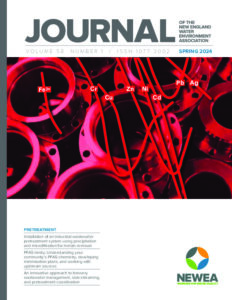Asset Replacement Methodologies
Due to the aging infrastructure in wastewater and water utilities, the replacement and refurbishment (R&R) of assets is becoming a critical issue. Use of a sound replacement methodology is necessary if a utility is to maintain the quality and viability of its infrastructure over the long term. This approach can also satisfy the requirements of Governmental Accounting Standards Board Statements 34 (GASB34).
Replacement Methodology
A replacement planning methodology relies on an inventory of system assets and an analysis of estimated replacement and refurbishment needs on a year-by-year basis over a period of many years. Some type of spreadsheet analysis or financial model is often used to make the evaluation. The methodology can be tailored to suit a particular agency’s reporting requirements. Asset data, including estimates of useful life, and current replacement costs must initially be compiled from available data. Planned replacement years for specific assets can be used where known; otherwise replacement timing for each asset can be calculated from the year placed in service and the estimated useful life. As an agency’s condition assessment program provides better data, this information can be incorporated into the analysis and provide more accurate projections. Other important inputs to a replacement analysis include: the time period for the analysis, future costs escalation, initial replacement fund balance, earnings rate, borrowing rate, and revenue sources.
Analysis Outputs
The output from the analysis, which often uses a simplified financial model, will show replacement fund balances and expenditures over time. This will allow an agency to look beyond the typical five-year capital improvement program planning and identify long term capital needs over a 20 or 30-year period. Output data can be represented graphically in diagrams, often referred to as Nessie Curves. Once the data are compiled and the analysis methodology is set, various sets of assumptions can be tested, such as different escalation rates, the timing of bond issues, and cash flows from surcharges for other revenue sources. Another important benefit of this type of systematic replacement planning approach is that it can provide justification for an agency’s reserve policy. Progressive utilities often maintain R&R reserves with the intent of funding some or all of their R&R costs without issuing new debt. This methodology can help define an appropriate amount that the utility should hold in reserve.
This chapter of the Resource Guide compiles a list of references and other data sources, as well as case examples related to asset replacement methods and strategies.
Resource List
1. Harlow, Ken “Planning and Funding Asset Replacement: One Agency’s Experience” WEFTEC, 2000. http://www.brownandcaldwell.com/Tech_Papers/796.pdf
2. Colbert, John; Fortin, John; Regan, Ted “Asset Replacement Strategies at the MWRA” NEWEA 2003.
3. Beaudoin, Daniel; Fortin, John “Energy and Asset Management 101 Comes to Harvard” Engineered Solutions Magazine. http://www.esmagazine.com/CDA/ArticleInformation/features/BNP__Features__Item/0,2503,140535,00.html

